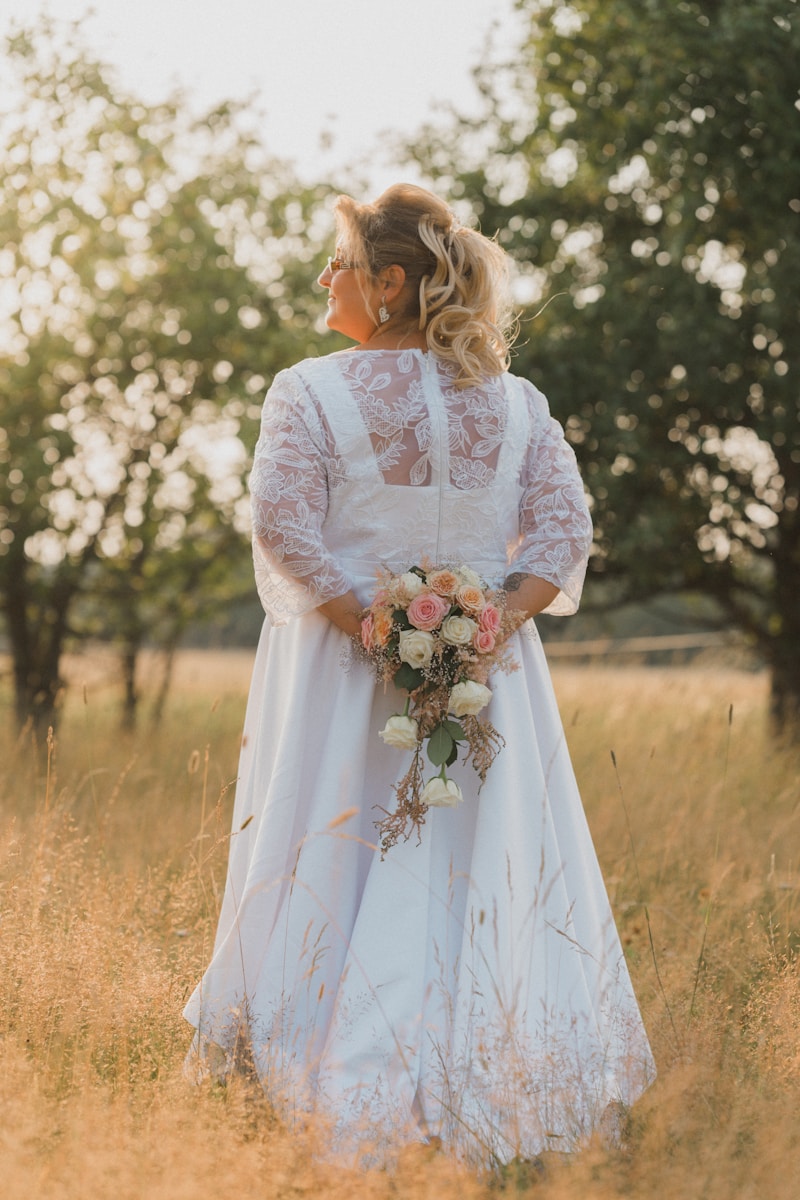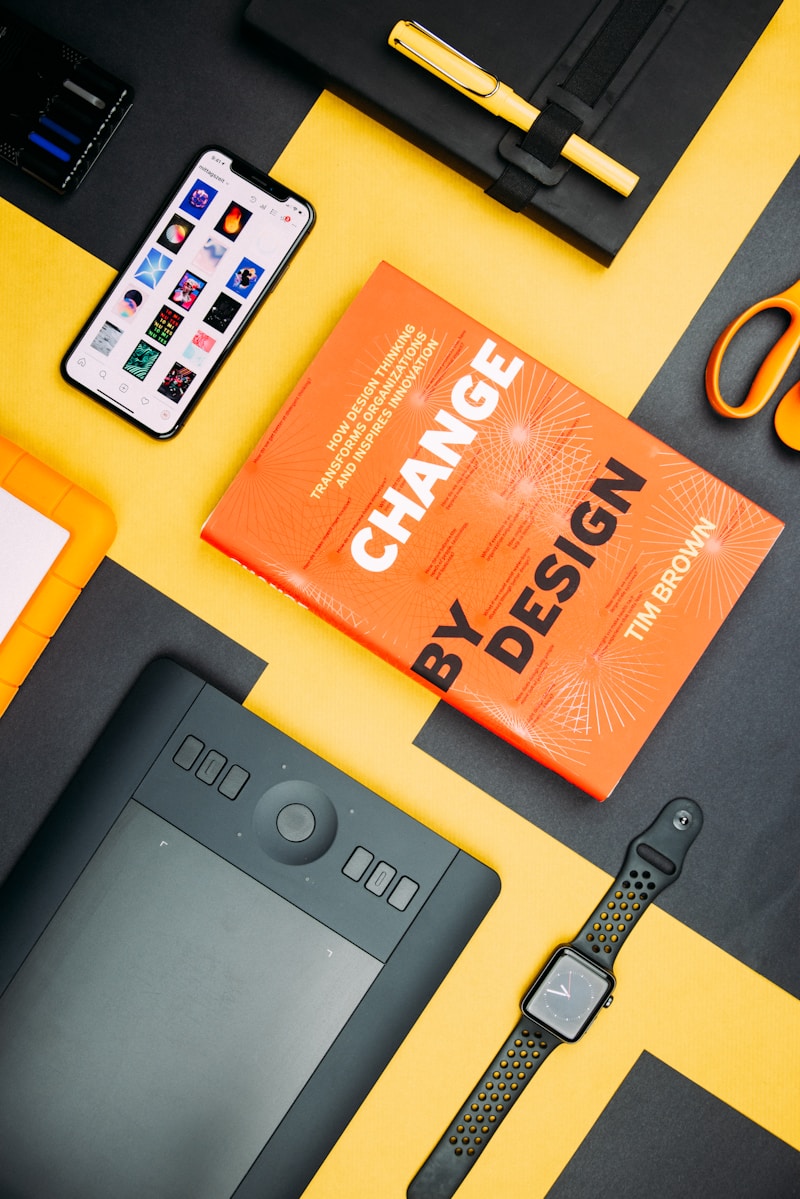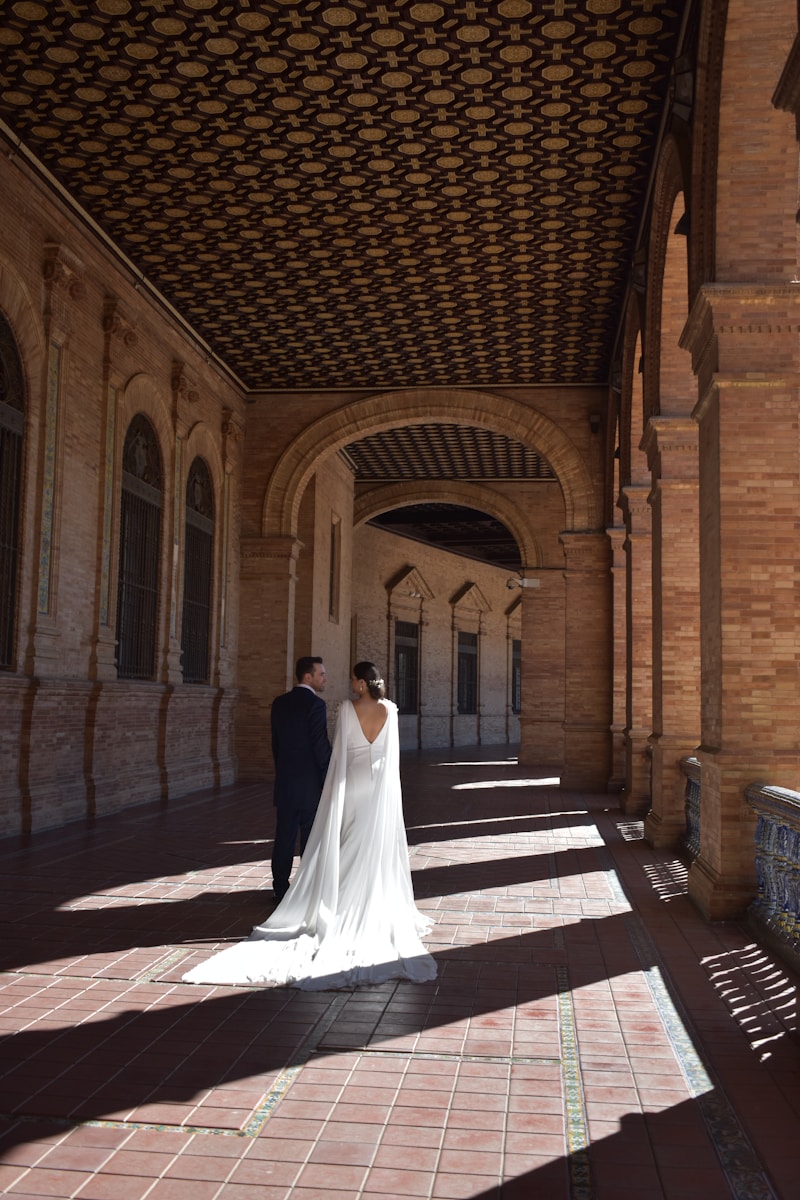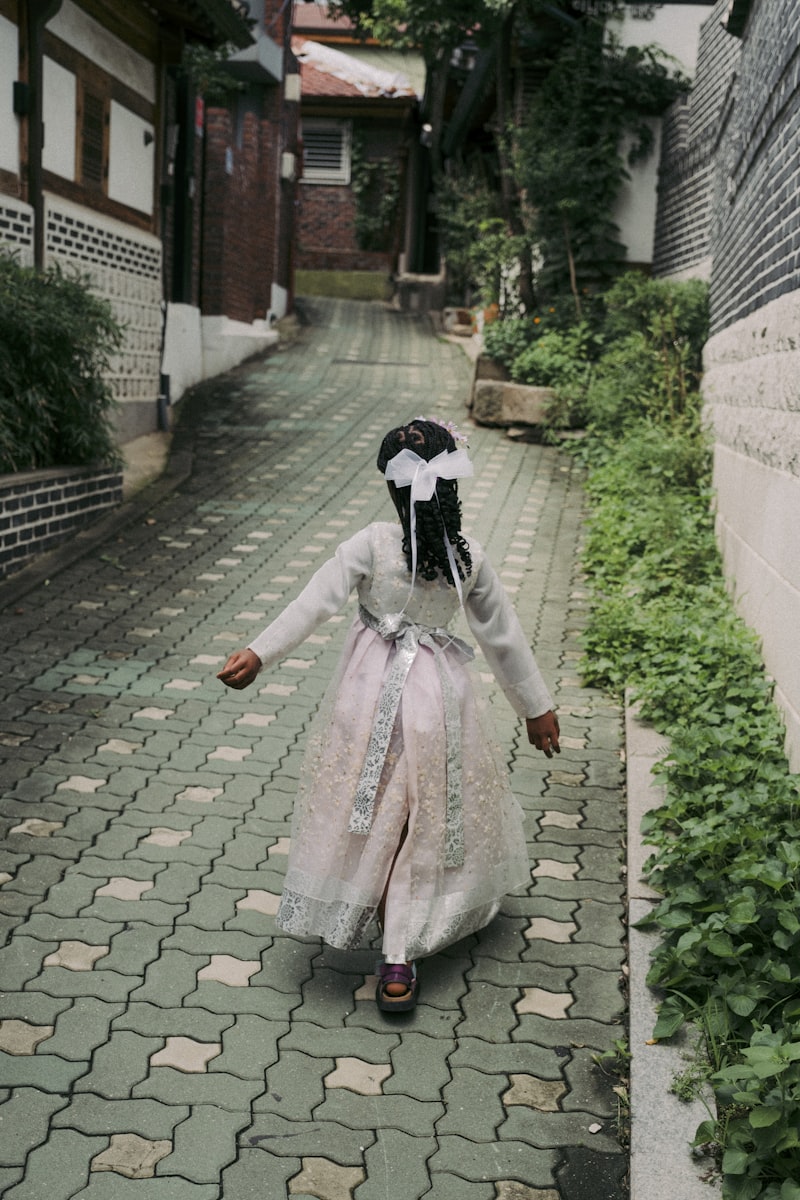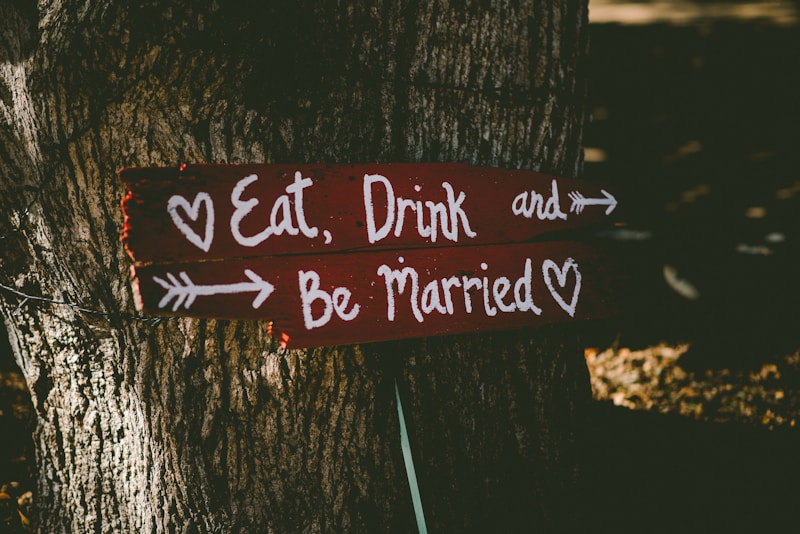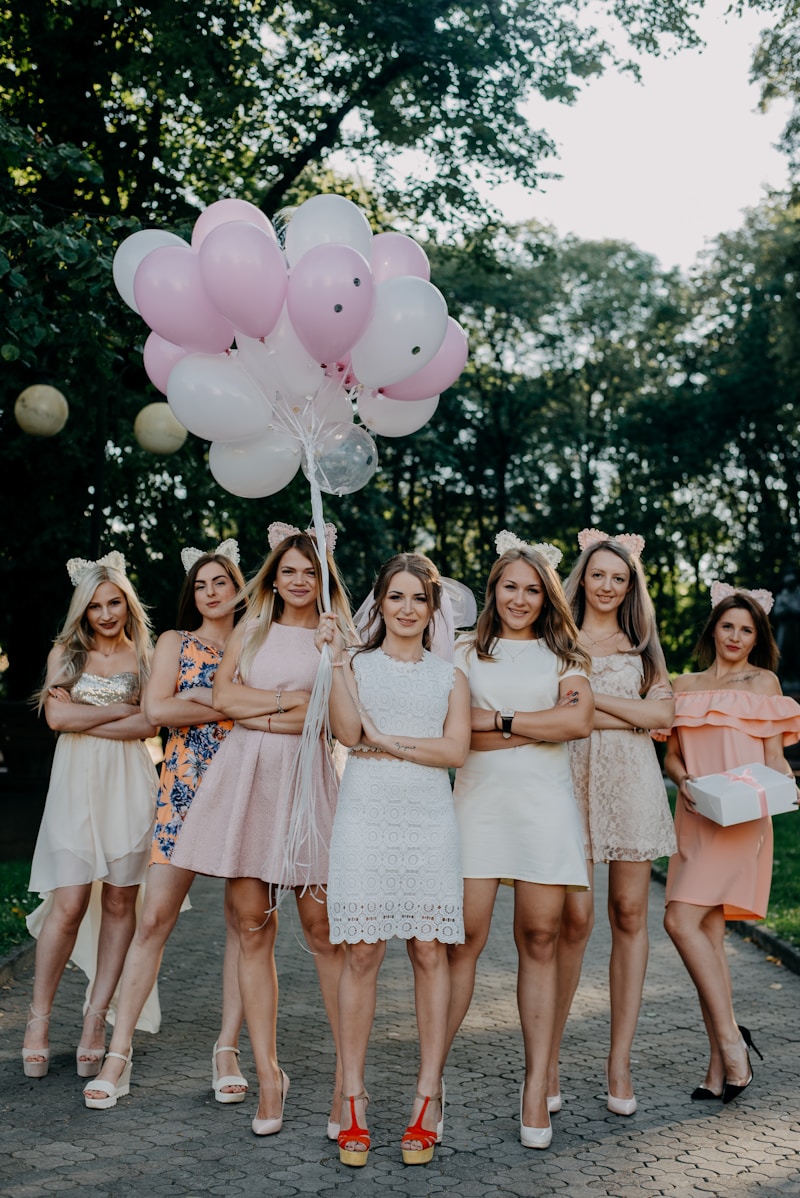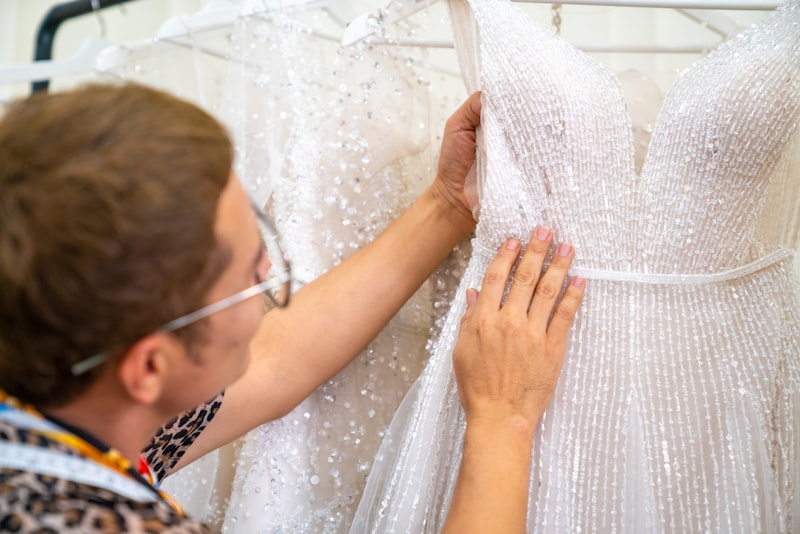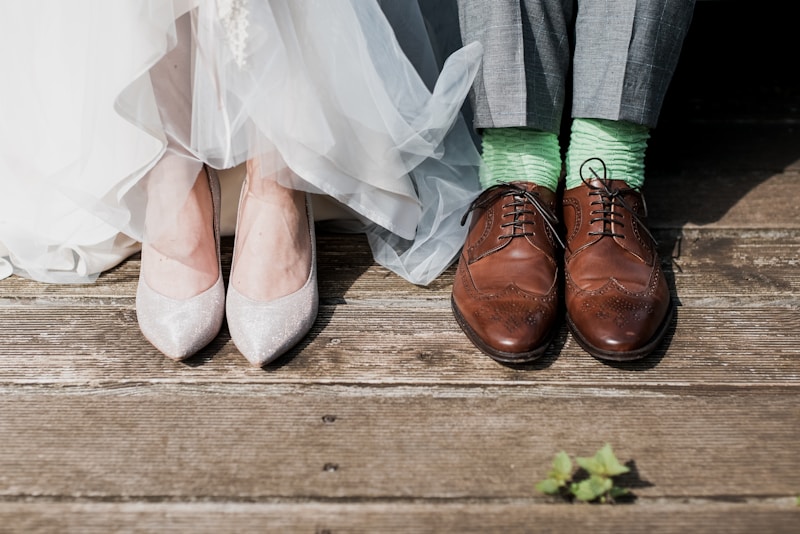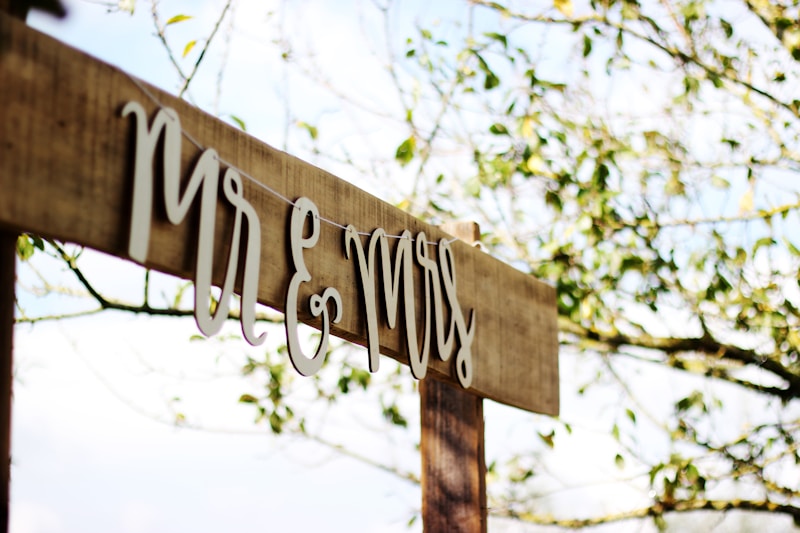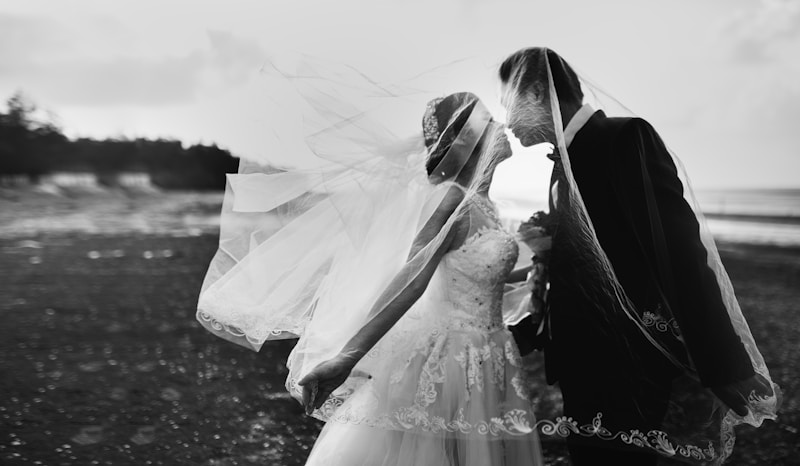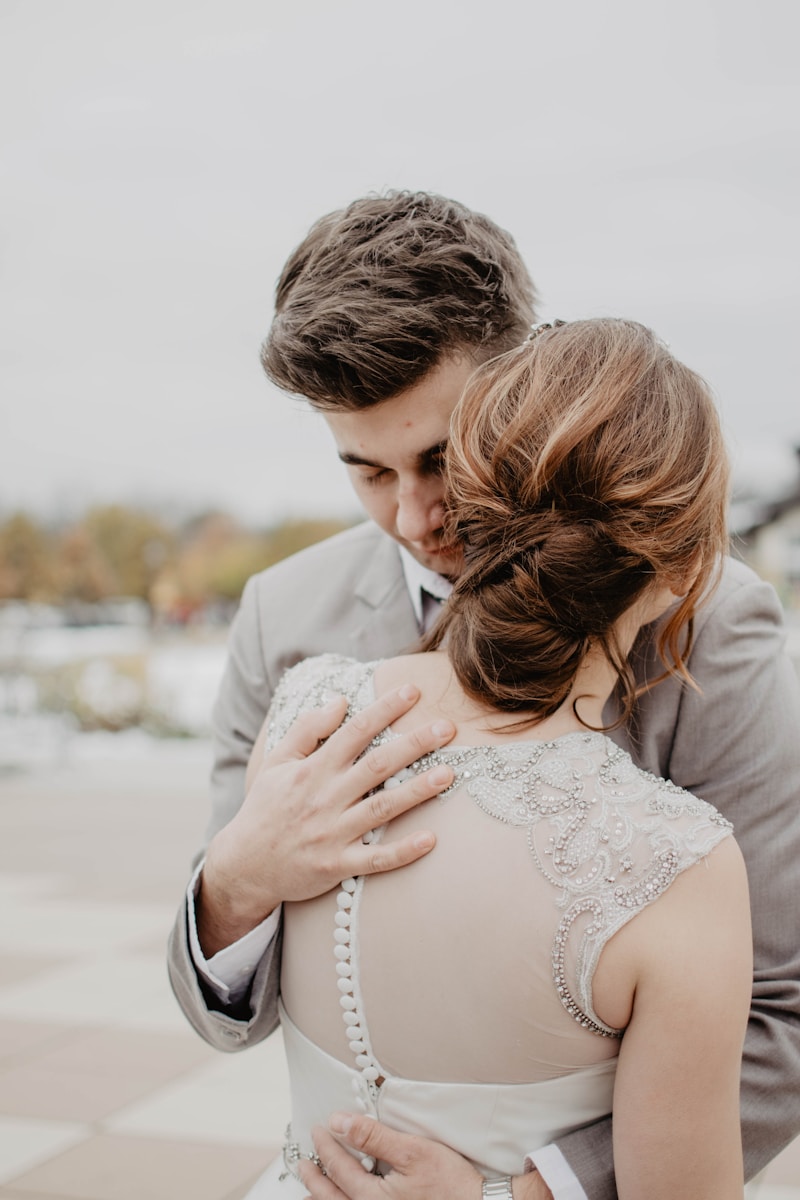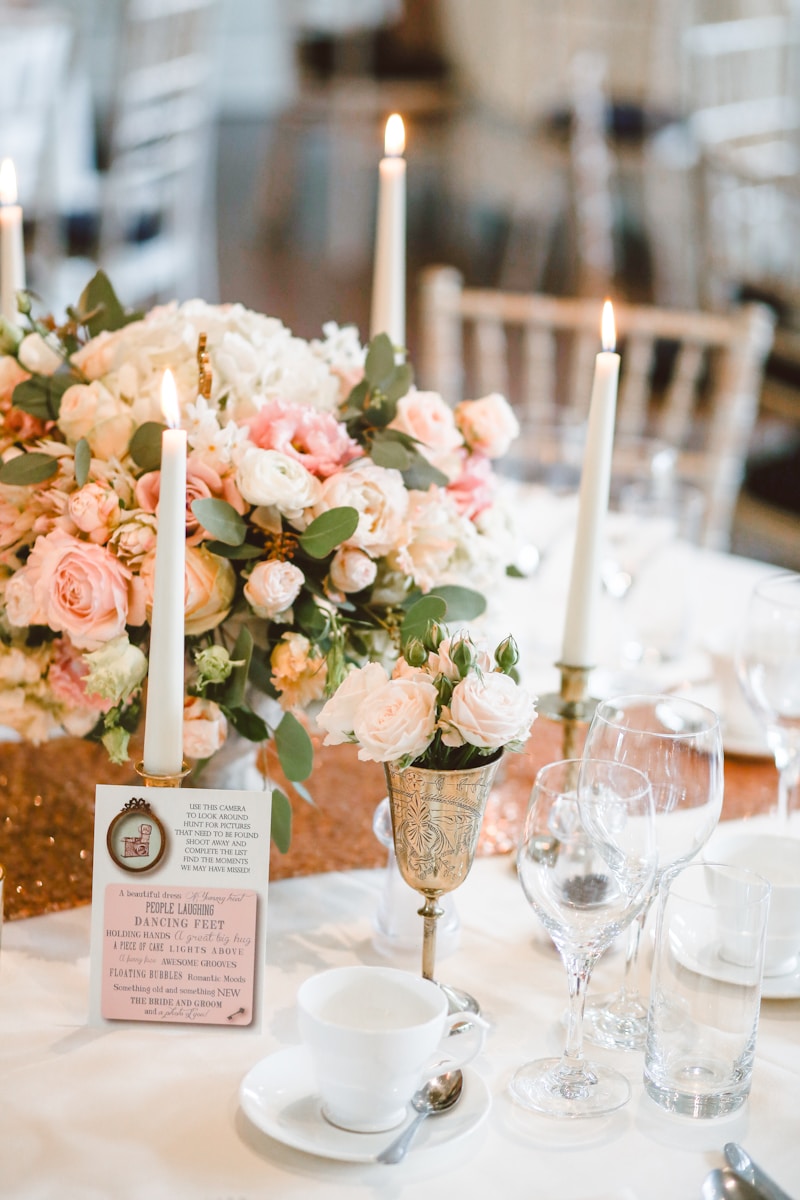Exploring Cultural Influences on Bridal Wear Designs
Bridal wear is one of the most important aspects of a wedding, reflecting not only personal style but also cultural heritage. As couples increasingly seek to commemorate their individual backgrounds on their special day, exploring cultural influences on bridal wear designs becomes essential. In this article, we’ll delve into the diverse cultural elements that shape bridal fashion, the significance behind them, and how they contribute to unique and stunning wedding garments. The Diversity of Bridal Wear Across Cultures Bridal attire varies tremendously across different cultures, each infused with rich history and tradition. From the elegant gowns worn in Western weddings to the colorful ensembles typical in South Asian ceremonies, understanding these cultural influences is vital for anyone venturing into the world of bridal fashion. Cultural Region Traditional Bridal Elements Western cultures White dresses, lace, long veils, and various silhouette styles South Asian cultures Bright colors, intricate embroidery, lehengas, and sarees East Asian cultures Red dresses, silk fabrics, and dragon and phoenix motifs African cultures Vibrant prints, head wraps, and handcrafted beadwork Latin American cultures Floral embellishments, lace detailing, and short sleeves This table summarizes how different cultures influence bridal wear designs, showcasing the unique attributes that make each tradition special. Historical Significance of Bridal ...
Overcoming Bridal Dress Design Challenges for OEMs
The bridal dress industry is an intricate field where creativity meets technical precision. For Original Equipment Manufacturers (OEMs) in this space, the challenges can be multifaceted. From adhering to evolving fashion trends to impeccable execution of design specifications, the road to producing the perfect bridal gown can often be fraught with obstacles. In this article, we will delve into the various challenges faced by OEMs in bridal dress design, with a focus on solutions and strategies that can help them thrive in a competitive marketplace.Understanding the Bridal Dress Market The bridal dress market is unique and dynamic, influenced by cultural trends, celebrity endorsements, and seasonal styles. Unlike standard clothing, bridal dresses often require a more personalized touch, as they embody significant emotional value for brides. For OEMs, understanding this market is crucial.The Importance of Trends OEMs must stay ahead of the curve regarding fashion trends. For example, the rise of sustainable fashion and eco-friendly materials has transformed how bridal gowns are designed and manufactured. OEMs can take advantage of these trends by incorporating innovative materials and environmentally-friendly practices into their production processes. Key Trends Impacting Bridal Dress DesignImpact on OEMsUse of Sustainable MaterialsIncreased demand for eco-friendly production methods.Customization and PersonalizationNeed for flexible designs that can cater to individual prefer...
Customization Options for Bridal Gowns in OEM: Exploring the Perfect Fit for Your Dream Wedding
When planning the perfect wedding, one of the most vital elements is finding the ideal bridal gown. For many brides, this means exploring customization options for bridal gowns in OEM (Original Equipment Manufacturer) to create a unique piece that reflects their personal style. In this article, we will delve into various customization options available for OEM bridal gowns, examine their benefits, and answer some frequently asked questions to help you make an informed decision for your special day.Why Choose Customization for Bridal Gowns?Customization offers numerous benefits for brides looking to achieve their dream look. Here are a few reasons why you should consider customized bridal gowns: Unique Design: Customization allows brides to create a gown that reflects their individual style, setting them apart from others. Perfect Fit: A custom gown can be tailored to fit the bride's body perfectly, ensuring comfort and confidence on the big day. Quality Materials: With OEM options, brides can handpick high-quality fabrics and details, enhancing the overall quality of the gown. Personal Touch: Customization provides an opportunity to incorporate meaningful elements into the gown, such as family heirlooms or personal symbols.Types of Customization Options for Bridal GownsBrides can choose from a variety of customization options when designing their bridal gowns. Here are some popular choices: Customization Option Description Fabric Selection Choose from va...
Tailoring Experiences for Wedding Dress Buyers: Making the Perfect Fit
Choosing the right wedding dress is a pivotal moment for any bride-to-be. It's not just about finding a dress; it's about tailoring experiences that resonate with individual desires and preferences. In this article, we explore how to personalize the wedding dress buying experience for brides, ensuring they find their dream gown effortlessly. From understanding the process to embracing cultural nuances, we'll cover key aspects that will make the journey memorable.Understanding the Wedding Dress Buying ProcessBuying a wedding dress is a significant milestone, and it involves more than just selecting a beautiful gown. The process can be overwhelming with countless styles, fabrics, and sizes available. Here's a brief overview of the typical steps involved:StepDescription1. ResearchStart by exploring different styles and designers online. Pinterest and Instagram are great sources of inspiration.2. Set a BudgetDetermine how much you are willing to spend on the dress, considering the remaining wedding costs.3. Find the Right BoutiqueResearch local boutiques or bridal shops that align with your style and budget.4. Schedule AppointmentsMake appointments with boutiques to try on dresses. Remember, some places may require advance booking.5. Try On DressesEnjoy the fitting experience, bringing along trusted friends or family for support.6. Finalize and OrderOnce you've made your choice, place the order and schedule fittings as needed to ensure the perfect fit.Personalizing the Experience...
Exploring Creative Collaborations in Bridal Design Projects
The world of bridal design is an ever-evolving landscape that thrives on creativity, sophistication, and unique personal expression. As couples seek to make their weddings more distinctive, creative collaborations in bridal design projects are becoming increasingly popular. This article delves into the ways in which designers, artisans, and various professionals come together to create breathtaking wedding attire and accessories.Understanding the Importance of CollaborationsCreative collaborations in bridal design projects come from the merging of different talents and expertise. Whether it involves fashion designers working alongside florists, photographers, or makeup artists, it creates a cohesive vision that is not only visually stunning but also meaningful. The following points outline why these collaborations are vital:Diverse Expertise: Each collaborator brings their own skills to the table, enhancing the overall quality of the final design.Increased Creativity: Working with different perspectives fosters innovation and creativity that stand out in the bridal market.Unique Designs: Merging various styles and ideas results in one-of-a-kind bridal creations that reflect the couple's personality.Stronger Networks: Collaborations build professional relationships that can lead to future projects and referrals.Types of Collaborations in Bridal DesignBridal design projects can include a multitude of collaborations, ranging from small teams to large-scale partnerships. Here are...
Exporting Wedding Dresses: Challenges and Strategies
The Growing Market of Wedding Dress ExportsAs globalization continues to reshape industries, exporting wedding dresses has emerged as a lucrative business opportunity. With the global wedding dress market projected to reach over $70 billion by 2024, many designers and manufacturers are looking to tap into international markets. However, exporting wedding dresses is not without its challenges. In this article, we will dive into the various challenges faced by businesses in this field, explore effective strategies for overcoming these hurdles, and provide insights for success in the competitive landscape of international wedding dress exports.Understanding the Challenges of Exporting Wedding DressesExporting wedding dresses presents several unique challenges that businesses must navigate:ChallengesDescriptionLegal RegulationsDifferent countries have unique import/export laws, which can complicate the process.Cultural SensitivityWedding traditions vary widely across cultures; understanding these differences is crucial.Shipping IssuesLogistics can be tricky, especially with fragile merchandise like wedding dresses.CompetitionThe market is saturated; differentiating your brand is essential.Legal and Regulatory ChallengesOne of the most significant hurdles in exporting wedding dresses is navigating the legal and regulatory landscape. Different countries have varying import/export laws, tariffs, and taxes that can impact your costs and procedures. For example, in the European Union,...
Strengthening Brand Identity in Wedding Dress OEM: A Comprehensive Guide
Understanding the Importance of Brand Identity in the Wedding Dress OEM IndustryThe wedding dress market is a vibrant and competitive space where brand identity plays a crucial role in distinguishing one brand from another. In the context of OEM (Original Equipment Manufacturer), where brands often outsource manufacturing, creating a strong brand identity is essential. This article explores how to strengthen brand identity in the wedding dress OEM sector to enhance visibility and customer loyalty.What is Brand Identity?Brand identity encompasses the visible elements of a brand, including its logo, design, color scheme, and overall aesthetic. It represents how a brand communicates its values and mission. For wedding dress manufacturers, particularly those in OEM, a strong brand identity can convey quality, craftsmanship, and an emotional connection with potential customers.Key Elements of Brand Identity in Wedding Dress OEMTo strengthen brand identity in the wedding dress OEM industry, consider the following key elements:Visual Branding: The first impression matters. Ensure that your logo, color palette, and design aesthetics reflect the elegance and sophistication associated with weddings.Storytelling: Share the story behind your brand. Customers want to connect emotionally with the brands they choose. Narratives about craftsmanship, heritage, and the inspiration behind your designs can create a lasting impression.Consistent Messaging: Whether through social media, your websi...
Creating Interactive Experiences in Bridal Dress Design
Introduction to Interactive Bridal Dress DesignThe bridal dress is a significant aspect of a wedding, capturing the essence of the bride's personality and the message of the ceremony. In recent years, the rise of technology and innovative design has led to the creation of interactive experiences in bridal dress design. This article explores how these experiences enhance the overall bridal shopping experience, engaging brides-to-be in ways that were previously unimaginable.Understanding Interactive ExperiencesInteractive experiences in bridal dress design refer to the incorporation of technology and creativity, allowing brides to engage directly with the design process. This can range from virtual reality fittings to augmented reality apps that let brides visualize their dresses in various settings. The goal is to not only meet brides' aesthetic desires but also to provide an engaging and personalized experience.Technology in Bridal Dress DesignThere are several technologies that have revolutionized the bridal industry. Some of the most prominent include: Virtual Reality (VR): Allows brides to 'try on' gowns in a virtual setting. Augmented Reality (AR): Integrates digital elements with real-world environments, offering interactive design options. 3D Printing: Enables custom designs that can be visualized and created based on personal preferences. Online Design Tools: Enable brides to mix and match different bridal elements to create their ideal gown.The Benefits of...
Identifying Reliable Wedding Dress OEM Manufacturers: A Comprehensive Guide
IntroductionFinding the right Original Equipment Manufacturer (OEM) for wedding dresses can be a daunting task for many bridal business owners and designers. A reliable partner can significantly impact your brand's reputation and profitability. This article will explore essential strategies for identifying trustworthy wedding dress OEM manufacturers, ensuring your bridal collection is both stylish and of high quality.Understanding OEM ManufacturersOEM manufacturers produce goods that are sold under another company's brand. In the wedding dress industry, OEMs can help designers and businesses bring their vision to life without the burden of extensive manufacturing capabilities. They provide essential services ranging from design development to bulk production.Why Partner with OEM Manufacturers? Cost-Effective: Outsourcing production can significantly reduce operational costs. Time-Saving: OEMs streamline the production process, allowing you to focus on marketing and sales. Expertise: Established OEMs bring industry knowledge and technical skills to the table.Key Factors to Consider When Choosing an OEM ManufacturerWhen searching for reliable wedding dress OEM manufacturers, consider the following factors:FactorDescriptionExperienceLook for manufacturers with a proven track record in bridal wear.Quality AssuranceVerify their quality control processes to ensure high standards.Minimum Order Quantity (MOQ)Evaluate if their MOQs fit your business model.Customization Capabilities...
Factors to Consider When Choosing OEM Suppliers for Wedding Dresses
Understanding the Importance of OEM Suppliers in the Wedding Dress IndustryThe wedding dress industry is a complex and vibrant market where design meets passion, particularly for brands looking to create unique garments that embody their vision. For many designers, choosing the right Original Equipment Manufacturer (OEM) supplier is crucial to the success of their wedding dress line. In this article, we will explore the factors to consider when choosing OEM suppliers for wedding dresses, providing you with a comprehensive guide to ensure that your brand stands out in this competitive market.What Is an OEM Supplier?An OEM supplier refers to a company that designs and manufactures products that are sold by another company under its own brand name. In the context of wedding dresses, OEM suppliers can take your designs and produce them at scale, allowing you to focus on marketing and sales. Understanding this relationship is essential as it forms the foundation of your brand's reputation.Key Factors to ConsiderWhen selecting an OEM supplier for your wedding dresses, consider the following factors:FactorDescription1. Quality StandardsThe supplier must adhere to your quality specifications. Examine their materials, stitching, and craftsmanship.2. Design CapabilitiesEnsure that the supplier can accommodate your design needs, including intricate detailing and customizations.3. Production CapacityAssess whether the supplier can meet your production demands during peak wedding seasons....
Unlocking Cost-Effectiveness in Sourcing Wedding Dress OEM Partners
The Importance of Cost-Effectiveness in the Wedding Dress OEM Sourcing ProcessIn the ever-evolving world of fashion, sourcing the right Original Equipment Manufacturer (OEM) for wedding dresses is crucial for any bridal business. A focus on cost-effectiveness ensures not just profitability but also the ability to provide high-quality options to customers. Below, we delve into various aspects of sourcing wedding dress OEM partners, emphasizing how to balance costs while maintaining quality.Understanding the Wedding Dress OEM LandscapeOEM partners provide essential manufacturing capabilities, allowing businesses to offer unique and private-label designs. In the wedding dress market, where trends can shift dramatically, aligning with the right OEM is a strategic decision. Factors affecting this partnership include: Quality of Fabrics Production Capabilities Lead Time Expertise in Bridal Fashion Compliance with Regional RegulationsFactorImportanceQuality of FabricsEnsures customer satisfaction and durability of the dressProduction CapabilitiesAbility to handle bulk orders and customizationLead TimeEssential for meeting market demands and timely deliveriesExpertise in Bridal FashionHelps in understanding market trends and consumer preferencesCompliance with RegulationsEnsures smooth operations and mitigates risksStrategies for Cost-Effective SourcingWhile quality should never be compromised, there are several strategies businesses can adopt to ensure cost-effectiven...
Mastering the Art of Negotiation with Wedding Dress OEM Suppliers
Understanding Wedding Dress OEM SuppliersWhen it comes to the wedding industry, choosing the right wedding dress is a dream for many brides-to-be. However, for retailers and designers, the challenge lies in finding the right Original Equipment Manufacturer (OEM) suppliers to bring these dreams to life. This article delves into the intricacies of negotiating with wedding dress OEM suppliers, ensuring you get the best quality and prices. What is an OEM Supplier?Original Equipment Manufacturer (OEM) suppliers are businesses that produce parts or equipment that may be marketed by another manufacturer. In the context of wedding dresses, OEM suppliers create garments that retailers can brand and sell. Understanding the role of these suppliers is crucial when entering negotiations.Why Negotiate with OEM Suppliers?Negotiation is an essential skill that can lead to better pricing, superior quality, and more favorable terms. When dealing with wedding dress OEM suppliers, negotiation can significantly impact your bottom line. Here are some reasons why negotiation matters:Cost Savings: Effective negotiation can help lower the cost per unit, which is especially important for small businesses operating on tight margins.Quality Control: Negotiating quality standards ensures that your wedding dresses meet consumer expectations.Customization: Discussing your specific needs can lead to tailored designs that reflect your brand.Preparation: The Key to Successful NegotiationBefore entering any ne...
Assessing Samples from Wedding Dress OEM Manufacturers: A Comprehensive Guide
Understanding the Importance of Sample Assessment in the Wedding Dress IndustryThe wedding fashion industry is a unique space characterized by its demands for quality, customization, and excellent customer service. As the market evolves, many bridal shops and designers turn to Original Equipment Manufacturers (OEMs) for their wedding dress production needs. Assessing samples from wedding dress OEM manufacturers plays a crucial role in ensuring the final products meet both quality standards and customer expectations.What is OEM in the Wedding Dress Industry?OEM stands for Original Equipment Manufacturer. In the context of the wedding dress industry, an OEM is a company that designs and produces wedding dresses according to the specifications provided by another company, often a bridal retailer or designer.Understanding how OEMs work can help bridal shop owners and designers to streamline their processes and improve their product offerings. When assessing samples from an OEM, key factors must be taken into account, including fabric quality, stitching details, and overall design adherence.Why Assessing Samples is EssentialAssessing samples is not merely a formality; it is a crucial step in the manufacturing process for a multitude of reasons:Quality Control: Ensures the materials and craftsmanship are up to standard.Custom Fit: Determines if the sample meets the design specifications and measurements.Risk Mitigation: Reduces the likelihood of production errors and misunderstandi...
Building Long-Term Relationships with Wedding Dress OEM Suppliers
In the competitive world of the wedding dress industry, establishing strong, lasting partnerships with Original Equipment Manufacturer (OEM) suppliers is crucial for success. This article delves into the significance of developing long-term relationships with wedding dress OEM suppliers, offering valuable insights into the process, benefits, and best practices.The Importance of Long-Term Relationships with OEM SuppliersBuilding long-term relationships with wedding dress OEM suppliers is not only about securing quality products; it’s about creating a mutual understanding and trust that leads to greater efficiency and innovation. Here are several reasons why focusing on these relationships is vital: Quality and Consistency: Long-term partnerships foster reliability in the quality of products, ensuring that the wedding dresses meet your brand’s standards consistently. Cost-Effectiveness: By developing a solid relationship, businesses can negotiate better pricing structures, which can lead to significant cost savings. Adaptability and Innovation: OEM suppliers who understand your brand well are more likely to be adaptable to your needs, bringing innovative solutions and product ideas to the table.Understanding the OEM Landscape for Wedding DressesBefore diving into how to build these partnerships, it's important to understand what an OEM supplier is in the context of wedding dresses. OEMs are companies that manufacture products according to the specifications and designs...
Impact of International Trade Policies on Wedding Dress OEM Suppliers: A Comprehensive Overview
IntroductionThe global landscape of the wedding dress industry is significantly influenced by international trade policies. These policies shape the operational frameworks of Original Equipment Manufacturer (OEM) suppliers in various regions, affecting their production, pricing, and market access. In this article, we will explore how these trade policies are impacting wedding dress OEM suppliers, delve into the related challenges they face, and consider the implications for stakeholders in the wedding apparel market.Understanding Wedding Dress OEM SuppliersOEM suppliers play a crucial role in the fashion industry, particularly in the production of wedding dresses. These suppliers work closely with designers and brands to create products that meet specific design requirements. Often located in countries with established textile industries, these suppliers are essential in ensuring a steady flow of quality wedding dresses to meet the demands of various markets.The Role of International Trade PoliciesInternational trade policies refer to the regulations and agreements that govern trade between countries. These can include tariffs, import/export restrictions, and trade agreements. For wedding dress OEM suppliers, these policies directly influence several factors:FactorImpact of Trade PoliciesProduction CostsChanges in tariffs can affect the cost of materials sourced internationally, impacting overall production costs.Market AccessTrade agreements can provide preferential access t...
Cultural Influences on Wedding Dress Design and OEM Sourcing
Weddings are significant events marked by unique traditions and customs rooted in cultural backgrounds. The wedding dress, as a central piece of this celebration, carries deep cultural significance. Understanding the cultural influences on wedding dress design and OEM (Original Equipment Manufacturer) sourcing reveals not only fashion trends but also the intricate weaving of tradition and modernity. In this article, we will delve into how cultural aspects shape wedding dress designs, the role of OEM sourcing, and what factors to consider for anyone looking to navigate the wedding apparel industry. Understanding Cultural Influences Throughout history, various cultures have contributed distinctive elements to wedding attire. These influences often stem from history, religion, climate, and societal norms, translating into trends that continually evolve. For instance, in Western cultures, the classic white wedding dress emerged from Queen Victoria's marriage in 1840, symbolizing purity and elegance, while some Asian cultures opt for vibrant red colors to symbolize good fortune and joy. Key Cultural Elements in Wedding Dress Design Here are some key cultural elements that significantly influence the design of wedding dresses: Culture Design Elements Symbolism Western White gowns, lace, pearls Purity, elegance Chinese Red silk, gold embroidery Good fortune, joy India Sarees, lehengas, intricate patterns Tradition, reflecting family heritage Ja...
The Future of Wedding Dress OEM Industry: Trends and Predictions
Understanding the Wedding Dress OEM IndustryThe wedding dress OEM (Original Equipment Manufacturer) industry has been experiencing substantial growth in recent years, fueled by rapid fashion trends, globalization, and the increasing customization demands of modern brides. As we delve into the future of this thriving sector, we will explore key trends, challenges, and opportunities that shape the landscape of wedding dress OEM production.Current Landscape of the Wedding Dress OEM IndustryBefore discussing the future, it's important to understand the present state of the wedding dress OEM industry. Many manufacturers are gearing up to meet the changing preferences of consumers. A significant shift towards online shopping has altered how OEMs operate, making it essential for companies to adapt their strategies.Key Trends in Wedding Dress OEM IndustryDescriptionIncreased CustomizationBrides are increasingly seeking personalized dresses that reflect their unique styles and preferences.Sustainable PracticesMore brands are focusing on eco-friendly materials and ethical production methods.Technology Integration3D modeling and virtual fitting technologies are reshaping how dresses are designed and sold.Global SourcingManufacturers are looking beyond local markets to source materials at competitive prices.Future Trends in the Wedding Dress OEM IndustryAs we look to the future, several key trends are anticipated to dominate the wedding dress OEM industry:1. Enhanced PersonalizationBride...
Exploring Innovative Designs with Wedding Dress OEM Suppliers
Introduction to Wedding Dress OEM SuppliersThe wedding dress industry is one of the most creative and thriving sectors within the fashion market. With countless styles and trends emerging every season, couples around the world seek the perfect dress to celebrate their special day. In this context, **OEM suppliers** have become crucial players in providing innovative designs that cater to the diverse needs and preferences of brides. In this article, we will explore the benefits of working with wedding dress OEM suppliers, the latest trends in designs, and how to choose the right supplier for your bridal fashion business.What are OEM Suppliers?OEM stands for **Original Equipment Manufacturer**. In the context of wedding dresses, these suppliers are companies that produce garments according to the designs and specifications provided by other brands or retailers. OEM suppliers typically have extensive experience, cutting-edge technology, and skilled labor forces to manufacture high-quality products that meet the distinct needs of their clients.Benefits of Working with Wedding Dress OEM SuppliersCost-EffectivenessOEM suppliers often offer competitive pricing due to their established manufacturing processes and economies of scale.CustomizationThey offer bespoke services, allowing brands to create unique designs tailored to target audiences.Quality AssuranceReputable OEM suppliers maintain high-quality standards, ensuring that the final product meets the expectations of both the ret...
Insights into Pricing Strategies for Wedding Dress OEM Products
Understanding Pricing Strategies for Wedding Dress OEM ProductsThe demand for wedding dresses has grown tremendously in recent years, making the key to success in this market not only the quality of the products but also the pricing strategies employed by manufacturers. In this article, we explore the intricacies of pricing strategies applicable to Original Equipment Manufacturer (OEM) products in the wedding dress industry, offering insights to businesses looking to enhance their market position.The Importance of Pricing StrategiesIn a competitive landscape where brides seek perfection for their big day, understanding how to price wedding dresses effectively is crucial. The right pricing strategy can determine the sales volume, brand perception, and ultimately, the profitability of OEM products. Here are several critical pricing strategies to consider:Pricing StrategyDescriptionCost-Plus PricingSetting prices based on the cost of production plus a markup for profit.Value-Based PricingPricing based on perceived value to the customer rather than the cost of production.Competitive PricingSetting prices in line with competitor pricing.Dynamic PricingAdjusting prices based on real-time supply and demand conditions.Psychological PricingUtilizing pricing techniques that have a psychological impact on customers, such as pricing an item at $199 instead of $200.Cost-Plus PricingCost-plus pricing is a widely used strategy in the OEM sector. It involves calculating the total costs invol...
How to Ensure Ethical Practices Among Wedding Dress OEM Suppliers
The wedding dress industry is a vibrant and integral part of the global fashion landscape. However, it also faces significant challenges regarding ethical practices, particularly among Original Equipment Manufacturer (OEM) suppliers. In this article, we will explore essential steps that brands can take to ensure that their wedding dress OEM suppliers adhere to ethical standards, providing not just quality products, but also responsible production practices.Understanding the Importance of Ethical PracticesEthical practices in the fashion industry are not merely trends; they are necessary commitments to sustainability and social responsibility. The wedding dress market often involves complex supply chains, where manufacturers may source materials from different regions, employing various labor forces. Ensuring ethical practices among OEM suppliers requires a comprehensive approach that covers labor rights, environmental sustainability, and fair trade.1. Research and VerificationThe first step in ensuring ethical practices is conducting thorough research on potential OEM suppliers. This involves: Background checks: Investigate the supplier’s history, reputation, and previous partnerships. Certifications: Look for certifications related to ethical labor practices, such as Fair Trade and ISO 14001. Reviews and testimonials: Seek feedback from other brands that have worked with the supplier.2. Establish Clear Ethical GuidelinesAfter identifying potential suppliers, it is c...


